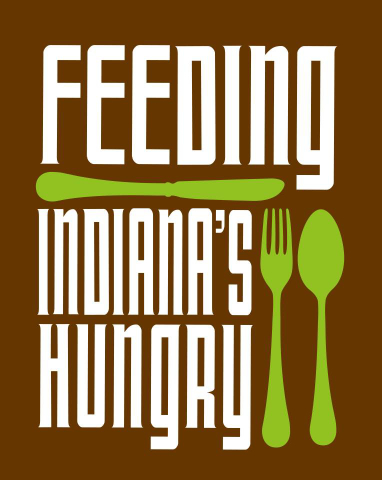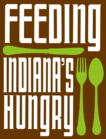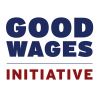A new study finds that 1,063,990 Hoosiers – including 355,780 children – do not always know where they will find their next meal. In all, 16 percent of the population in Indiana struggle with hunger, according to research released today by Feeding America, the nation’s largest hunger-relief organization. For Hoosiers under 18 years old, the food insecurity rate is nearly 23 percent. These rates remain unchanged from 2011.
The findings are from Feeding America’s “Map the Meal Gap” study, which estimates the rate of food insecurity for both the general population and, separately, for children under the age of 18. The estimates are calculated at both the county and congressional-district level for the entire U.S. The eleven member food banks of Feeding Indiana’s Hungry are all part of the Feeding America network.
“Food insecurity is one of the leading public health challenges in the United States,” said Dr. Craig Gundersen, Professor of Agricultural and Consumer Economics at the University of Illinois, an international food insecurity expert and the lead researcher of the “Map the Meal Gap” study. “We undertook this research to demonstrate the extent and prevalence of food insecurity at both the county and congressional-district level. This data has the potential to redefine the way service providers and policy makers address food insecurity in the communities they serve.”
“We are particularly concerned about children who are under-nourished. A child who does not receive adequate nutrition may experience behavioral problems, have difficulty concentrating in school, and has an increased risk of medical problems. Lack of adequate nutrition in children, for even a brief period of time, may also cause permanent physical and developmental impairments,” Gundersen said.
According to the U.S. Department of Agriculture, more than 50 million people nationwide are food insecure.
By analyzing household income levels, the study reveals that 69 percent of children at risk of hunger in Indiana are eligible for federal nutrition programs, like free or reduced-price school lunch or breakfast; but that 31 percent are not.
“This data provides specific numbers of Hoosiers at risk of hunger, rather than just an abstraction of percentages,” said Emily Weikert Bryant, executive director of Feeding Indiana’s Hungry. “It tells us that one in six Hoosiers is at risk of hunger, and for children it’s just one in four. These numbers show that hunger is a reality in every county and community of our state. Hunger is much closer to each and every Hoosier than they may realize. No Hoosier should ever have to worry about where they will find their next meal.”
“Map the Meal Gap 2013” also shows:
- The cost of an average meal in Indiana. Here in Indiana, the cost of an average meal is $2.33.
- The cost of an average meal in Indiana relative to the national average. Here in Indiana, the cost of a meal is 34 cents lower than the national average of $2.67.
- The annual food budget shortfall in Indiana, meaning the amount of additional money that food-insecure individuals in the area said they would need to put enough food on the table for an adequate diet. In Indiana, the total number is $173,459,592.
This is the third year that Feeding America has conducted the “Map the Meal Gap” study. The findings of “Map the Meal Gap” are based on statistics collected by the U.S. Census Bureau and the U.S. Bureau of Labor Statistics; food price data and analysis were provided by Nielsen (NYSE: NLSN), a global information and measurement company providing insights into what consumers watch and buy. The study was generously supported by the Howard G. Buffett Foundation, Nielsen and The ConAgra Foods Foundation.
Prior to the study’s first release in March 2011, food insecurity data was only available at the state level in the U.S. Department of Agriculture’s annual report. The study further analyzes each county’s food insecure population to determine their income eligibility for federal nutrition assistance, and also provides meal cost estimates for every county in the nation.



